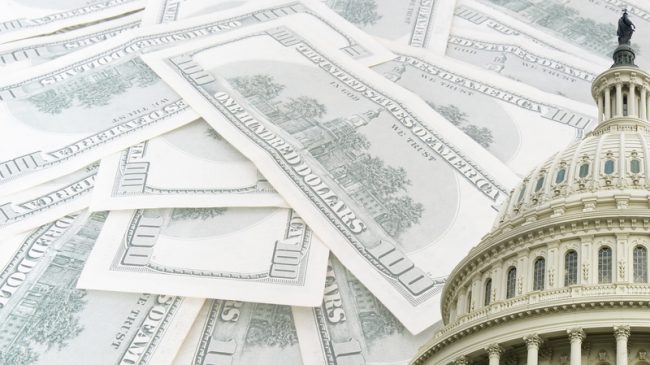Previous: 6. DHS > Taxpayer’s Guide > Next: 8. Labor and Unemployment
Summary: Nearly $9.3 billion of the stimulus bill is given to the Interior Department and Environmental Protection Agency.
>> Spending
$6.4 billion for EPA Grant Programs. The Environmental Protection Agency has several programs that grant money for clean water and drinking water protection activities. The majority of this money will go towards the general funding of those programs, while $300 million will go towards diesel emission reduction grants.
A key question that was not asked during the stimulus debate was whether the government should be promoting certain areas of energy and environmental research. Ford has developed a “Clean Diesel” technology on its own, without government funding. If there is a demand in the market, other companies will follow suit. Instead, Washington creates grant programs based on their perception of what should be happening in the market, not any analysis of how effective these grant programs can be.
$800 million for EPA Hazardous Waste Clean Up. This money will go to an Environmental Protection Agency program for cleaning up and disposing of hazardous material.
This is certainly a valuable public service, however it is curious that this is in the stimulus. If the EPA needed this money to prevent disease then it would have been given to them. However, if the money is because the EPA has gone over budget in clean up projects, the likely cause is mismanagement of resources. Instead of giving a government agency nearly a billion dollars, the Congress should consider using a private company to do this work, which is a frequent practice at the state level. Using a private company would put money directly into the economy, helping firms get business, and increasing economic growth.
$735 million for the National Park Service. The NPS general operating budget will receive $146 million, but the bulk of this money, the remaining $589 million, is designated to build or repair new roads, trails, and other park infrastructure.
$500 million for the Bureau of Indian Affairs. This money is mainly for building new roads, schools, and prisons on Indian reservations. The “Indian Guaranteed Loan Program” will get $10 million to insure loans for Indian-owned businesses.
$340 million for the Bureau of Land Management. This money will go into BLM’s general budget to care for natural resources, Federal land, manage wildfires, and build or repair necessary roads, bridges, and buildings to increase energy efficiency.
$280 million for the Fish and Wildlife Service. This money will go to FWS’s general budget, a continuation of stimulus funds that increase government agency operational spending.
$140 million for USGS Geological Surveys. This money is for the general operations budget of the U.S. Geological Survey agency to conduct surveys, investigations and research.
This, and other general budget spending is not based on requests from those agencies or documented need. The spending will benefit congressional districts that house USGS facilities or those that are being surveyed, bringing a substantial benefit to the district representative.
$75 million for the Smithsonian Institution and NEA. The Smithsonian general budget will receive $25 million for renovating and improving the buildings and their exhibits, the other $50 million will support National Endowment for the Arts grants programs to help struggling artists stay employed.
$15 million for the Historic Preservation Fund. The “Historic Preservation Fund” was established in 1996 for preservation projects at historically black colleges and universities. This will go into their general fund.
>> Commentary
There are many spending projects that have surface value, but simply aren’t within the scope of what government spending should be focused on. Why should federal tax dollars be used to support struggling artists? At a time when families are tightening their budgets, this is not a good use of public money. The question is not about the value of art, but instead about the public vs. private support of art. The same can be said of money for the Smithsonian. With the nation trillions of dollars in debt, this should be spending that is cut, not increased. Private sector donations can support the arts where there is actual demand. Similarly, money to promote “historically black colleges” through the Historic Preservation Fund is simply pork barrel spending. These are dollars earmarked by specific legislators to bring money to their constituents. The value of these projects is not in question; however, the need for them to be funded by federal taxpayers is. While they represent only a small number, relative to the size of the complete stimulus bill or federal budget, this kind of wasteful spending quickly adds up, and contributes to our massive deficit and debt.
More from Reason on Environmental policy.
>> Government Recovery Websites
Department of the Interior: http://www.doi.gov/recovery/
Environemtnal Protection Agency: http://www.epa.gov/recovery/
Previous: 6. DHS > Taxpayer’s Guide > Next: 8. Labor
Written by: Anthony Randazzo. Please email with any comments or corrections.
